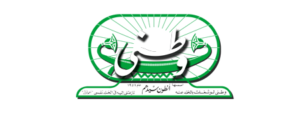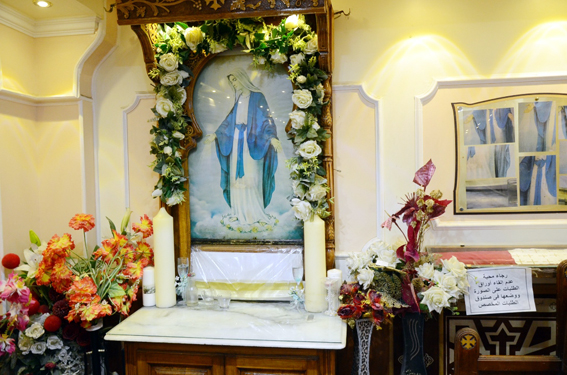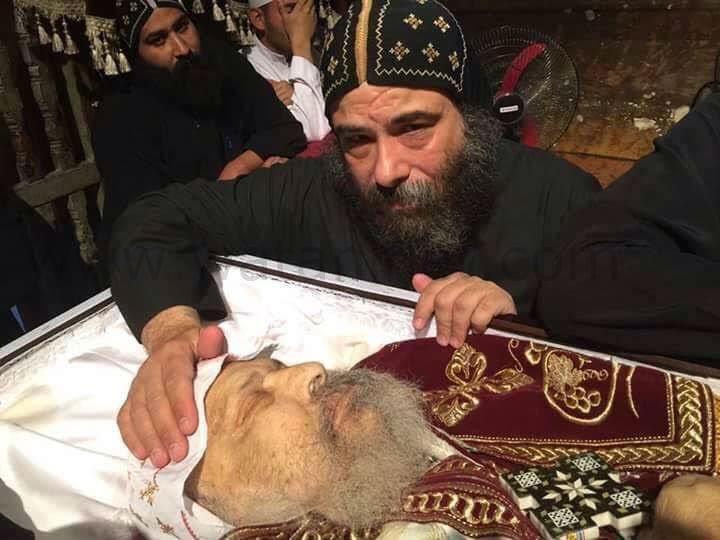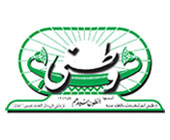The Coptic Bible, its old manuscripts, and the languages relevant to it, have been the focus of the 10th International Symposium organised by St Mark Foundation for Coptic Heritage. The symposium was held from 29 January to 2 February 2023 under the patronage of Pope Tawadros II who hosted it at Logos Centre in the Western Desert’s Wadi al-Natroun monastery of Anba Bishoi, some 110km northwest Cairo.

Participants in the symposium included both seasoned and young researchers in Coptic studies; they came from Egypt and the world over, and presented some 30 papers that offered rich studies in the Coptic Bible and its manuscripts in the Sahidic, Bohairic, and Fayummic Coptic dialects. On their way from Cairo to Anba Bishoi Monastery, they stopped over at the nearby monastery of St Macarius to visit its famous manuscript library.
Pope: It’s about Life
At Logos Centre, Pope Tawadros opened the symposium with a word in which he warmly welcomed his guests and commended their dedicated work.

“We are here in Wadi al-Natroun,” the Pope said, “the historical Scetis where asceticism and monasticism thrived since the 4th century. This heritage site is now home to the modern conference centre that hosts this symposium, the Logos Centre.” The Pope gave a brief on Logos Centre, which was built in 2016 with the aim of spearheading enlightenment and cultural projects, ecumenical dialogue, hosting conventions of Coptic Church leaders and its Holy Synod, and spreading teaching.
Pope Tawadros went on to talk about the three elements on which the symposium focused: the Coptic Bible, manuscripts, and language.

“The Bible,” the Pope said, “is the Book of Life. Jesus the Lord described his words as ‘words of spirit and life’ … As you delve into your studies of the Bible, always remember that you are studying the book of the life of all humans; it gives them salvation and their lives meaning.
“The Coptic language in which the Bible under study was written is a language used in everyday life and in prayer … it reveals the life of the Copts over the ages and until the present day.”
Blood, sweat, tears
“As for manuscripts,” Pope Tawadros went on to say,” they have recorded life throughout time: public life, Church life, the Bible, and others. St Mark Foundation has been doing remarkable work in documenting and indexing manuscripts, and making them accessible to researchers in digital form on the Internet.”
Logos Centre, the Pope said, is home to the Papal Central Library, the largest Coptic library in the world. “We try to include in it everything we possibly can: manuscripts, studies, books and sources of knowledge. Manuscripts in specific may be found in many of our old churches, monasteries, and the patriarchal quarters. We exert efforts to collect them, make copies of them, index and archive them. To say nothing of the restoration and maintenance work needed for them, for we have gone into partnership with the Bibliotheca Alexandrina and the monastery of Mar-Mina in Maryut, both entities have huge experience in this field. Manuscripts were written with blood, sweat, and tears: the tears of patience, prayer, and endurance.”
Takla: What use?
Hany Takla, Secretary General of the symposium, thanked all the attendants, on behalf of St Mark Foundation for Coptic Heritage. “We live in an age where all information is widely available, but we have been together studying Coptic heritage and history; we offer the outcome to our present and future. I ask you all to encourage young researchers because knowledge will only reach new generations through them. What we study should be made visible to the world, and should influence and change people’s lives.

“We live in the era of widely open virtual browsing. Our dream is no longer that our knowledge would be confined to a group of researchers and scholars all over the world, but should spread out to the public to inform them of their roots and let these roots influence their future. Our responsibility is to hand our knowledge over to everyone.
“Our world stands at a critical junction … our role is to spread knowledge of our Bible-based heritage … if not, what use is the knowledge we share?”
The Bible
The papers presented dealt with the Coptic Bible, manuscripts, and language in a variety of aspects. One by Prof. David Brakke from Ohio State University was titled “The Bible, Shenoute, and the White Monastery Federation”, and examined the pivotal roles that St Shenoute the Archimandrite and the White Monastery Federation played in the history of the Coptic Bible in late-ancient and medieval Egypt. St Shenoute’s works and the manuscripts produced at the White Monastery provide crucial evidence for the text of the Sahidic Bible and possibly the Septuagint and Greek New Testament. St Shenoute rarely interpreted biblical passages in the commonly used verse-by-verse fashion; he integrated biblical quotations and allusions into his discourses so closely that the distinctions between the biblical text and its readers/hearers and between the biblical past and the Christian present were dissolved.

Dr Ivan Miroshnikov from the Swedish Collegium for Advanced Study, Uppsala, Sweden gave a brief introduction to the Fayyumic version of the Bible, first discussing the place of Fayummic literary dialects as “the great Middle Egyptian dialectal group.”
The “Bible as School Text”, presented by Prof. Lillian Larsen from the University of Redlands, informs that it was during the 4th century that biblical influence began to show on late-ancient school curriculum pedagogical use that spanned the Mediterranean.
Translation
Given that Biblical texts were the first literature to be translated into Coptic, Hany N. Takla (St. Shenouda the Archimandrite Coptic Society/University of Divinity (Aus)/ACTS, CA, USA) presented a paper on “The State of Preservation of the Coptic Bible”. He addressed the version exemplar, its format, order of books, Biblical collections ancient and modern, and how much have survived; also the characteristics of the biblical texts in Coptic.

There were papers presented on the technique of translating the Coptic Bible from the original Greek; also the digitisation, translation, and editing of books from the Coptic Bible, including the Old Testament, the Pauline Epistles, and the Psalms.
The topic of a paper by Dr Vevian Zaki (HMML, Collegeville, MN, USA), “Translating the Bible Into Arabic: Approaches and Strategies of 13th-century Coptic Scholars”, tackled how the Coptic community started the process of translating the Bible into Arabic later than other denominations, and adapted versions from other traditions. However, once they began the process, it turned into an active movement of collating, revising, and copying Arabic Bible manuscripts.
Manuscripts
Papers on manuscripts of the Coptic Bible included studies of the collection at Wadi al-Natrun and al-Muharraq Monasteries by Fr Misael al-Barmousy (al-Baramous Monastery, Wadi al-Natrun); and that at St Paul Monastery, Red Sea, by Dr Lisa Agaiby (St Athanasius College, University of Divinity, Australia), who described the collection as one of the richest in Egypt.
Emad Habib Huzaien of St Mark Foundation, Cairo, presented a paper on “Cataloging of Bible Manuscripts on the OPAC “online Catalog” of St Mark Foundation”. The Foundation, he said, through collaborating with Coptic manuscripts libraries, aims to make as many as possible collections of manuscripts freely accessible to scholars.
“Clad with the Word”
Interestingly, a number of papers tackled how Egyptians used the Bible and biblical quotations in matters relating to their life—and even death, especially in martyrdom—also most prominently in Epigraphy. According to Christine Ayad (Fayoum University, Egypt), this should not be strange since the Bible was the backbone of Coptic communities, and the base of their literature.

A paper by Prof. Jacques van der Vliet (Leiden University, The Netherlands), titled “Clad with the Word: The Bible in Coptic Epigraphy”, shows that Copts copied verses of the Bible on the walls of houses and monasteries, on rocks at the road-side and even on furniture and dress.
Credit where it’s due
Anba Thomas, Metropolitan of Qussiya and Meir, and spiritual patron of St Mark Foundation, presided over the final session of the symposium. He started by thanking every person whose work contributed to the success of the event, including the symposium organisers, electronics officials, and Logos Centre officials and staff.
Anba Thomas announced the topic and date of the upcoming symposium as: “Coptic Mass” in 2025. He then proceeded to hand souvenir gifts to all the participants in the symposium.

On their way back to Cairo, the symposium participants were treated to a visit to Anafora, a retreat farm established by Anba Thomas on the Cairo Alexandria Desert Road some 60km north of Cairo. In Cairo, they visited St Mark’s Cathedral in Abassiya, and the Egyptian Museum in Tahrir Square, which was then holding a special Coptic exhibit.
St Mark Foundation for Coptic Heritage
St Mark Foundation for Coptic History Studies was founded in 1998 by Fawzy George Estafanous (1937 – 2021), an Egyptian American Copt who was a brilliant figure on two fronts: cardiac anaesthesiology and preservation of Coptic history and heritage.
Upon his retirement from medical duties, Dr Estafanous founded the Foundation with the aim of promoting the study of the Coptic Church’s history and heritage through symposiums, conferences and publications.
He put the idea forward to Pope Shenouda III (Coptic Patriarch in 1971 – 2012) who approved it, gave it his official blessing, and generously provided it with an office in the Coptic Studies Institute building at St Mark’s Cathedral grounds in Abbassiya, Cairo. The Pope exhorted all Coptic bishops and clergy, also professors in the Coptic Orthodox Seminary, to support the project.
Pope Shenouda entrusted the Foundation with the ancient Coptic manuscripts at St Bishoi Monastery in the Western Desert to photograph, index, restore, and document; work which extended to other manuscripts inside and outside Egypt. Among its outstanding work, the Foundation compiled a digital archive of 250,000 Coptic manuscripts on 18 CDs, and gifted it to the Bibliotheca Alexandrina.
When Pope Tawadros II succeeded Pope Shenouda as patriarch in 2012, he also blessed and supported St Mark Foundation and its vision and mission which, according to renowned Coptologist Gawdat Gabra who is a key figure in the Foundation, involved writing an up-to-date history of Christianity and monasticism in Egypt. For that purpose, the Foundation has organised every other year an international symposium on Christianity and monasticism in a region in Egypt, followed by a publication on the topic. Volumes published have included various Coptic topics, among them research on Christianity and Monasticism in Fayoum Oasis; and in the Upper Egypt dioceses of Akhmeem and Sohag, Naggada and Qus, Luxor, and Giza; also on Christianity and Christian monuments in Aswan and Nubia.
The Foundation plays an instrumental role in the Coptic Cultural Centre of the Coptic Orthodox Patriarchate at Anba Rweiss, and cooperates with Shenouda the Archimandrite Coptic Society on many cultural activities.
Fawzy Estafanous (1937 – 2021): Brilliant doctor, singular Copt
Watani International
15 February 2023















